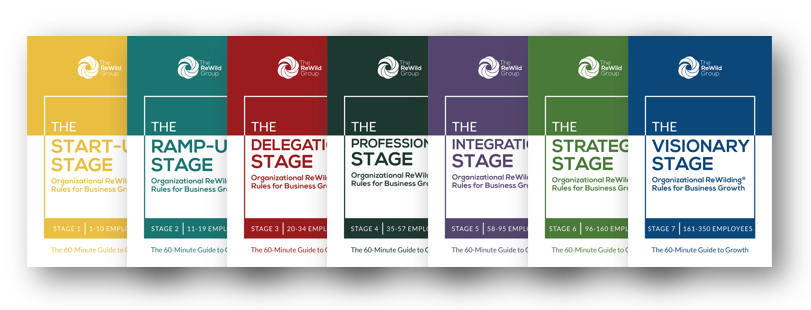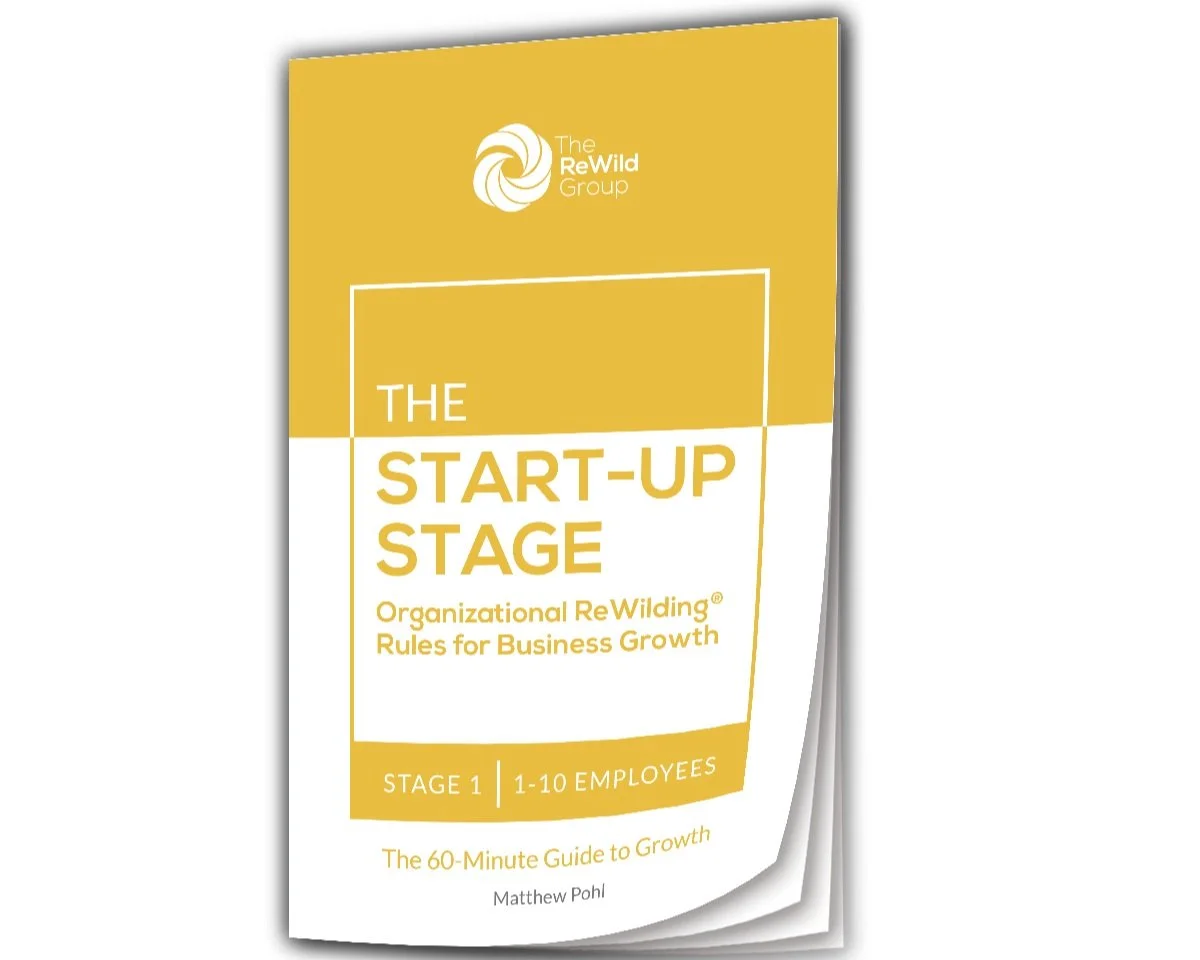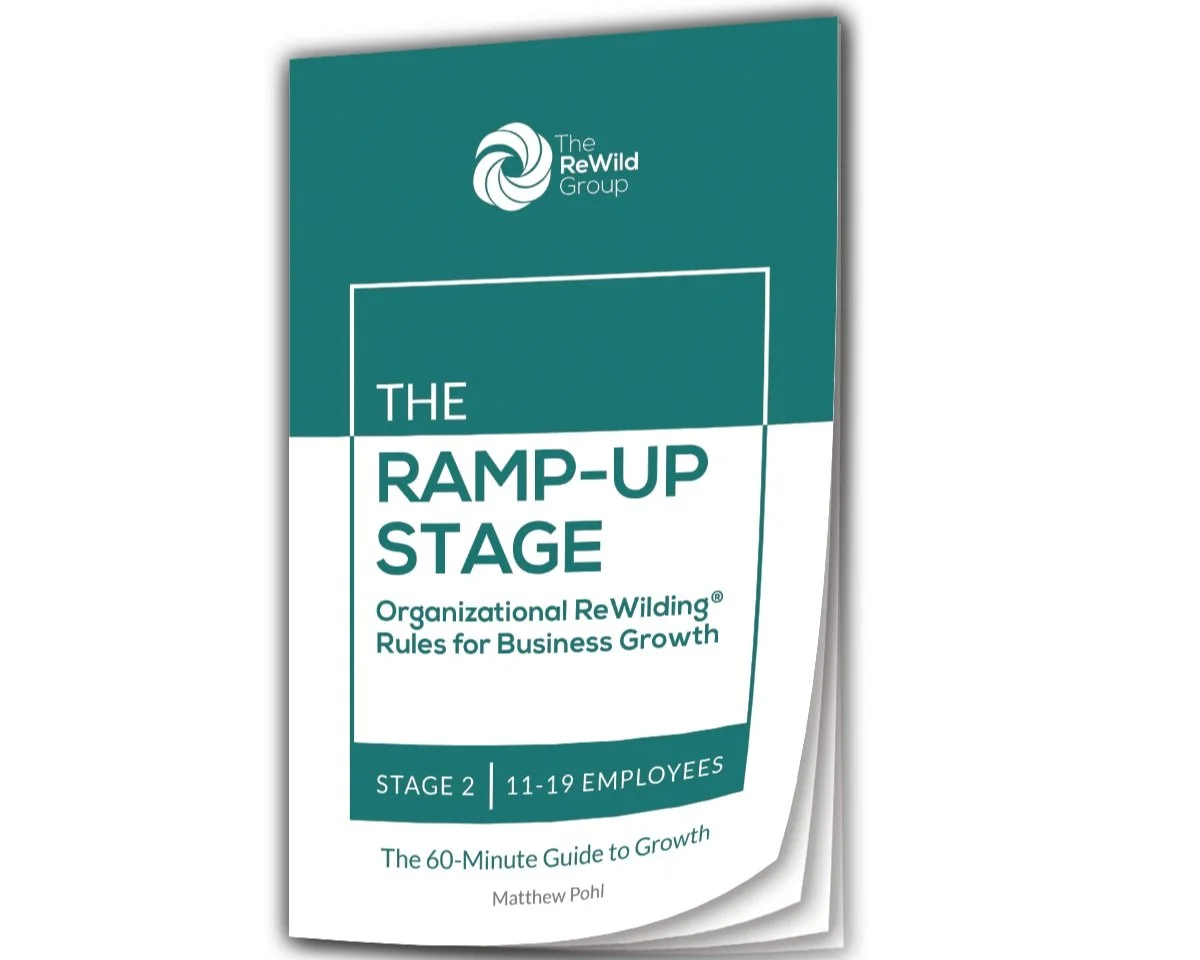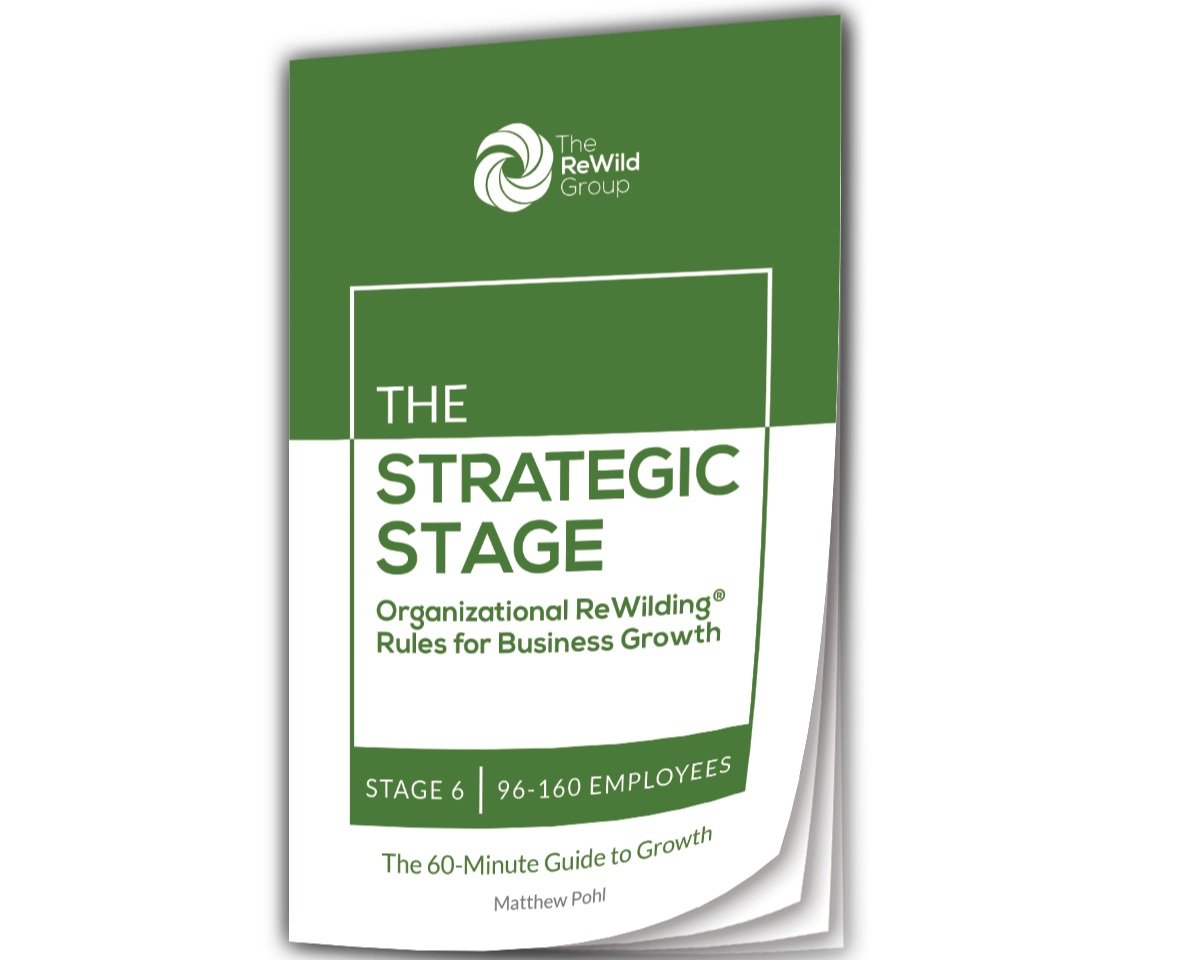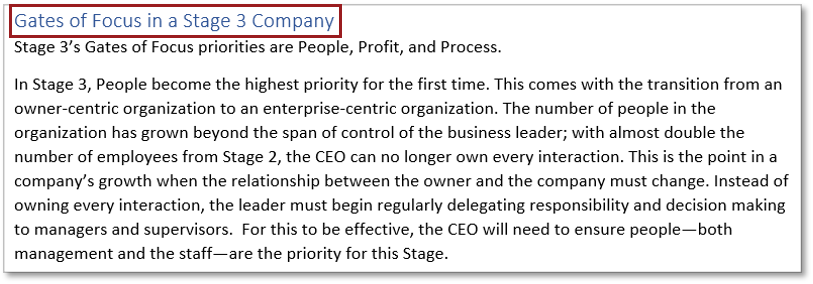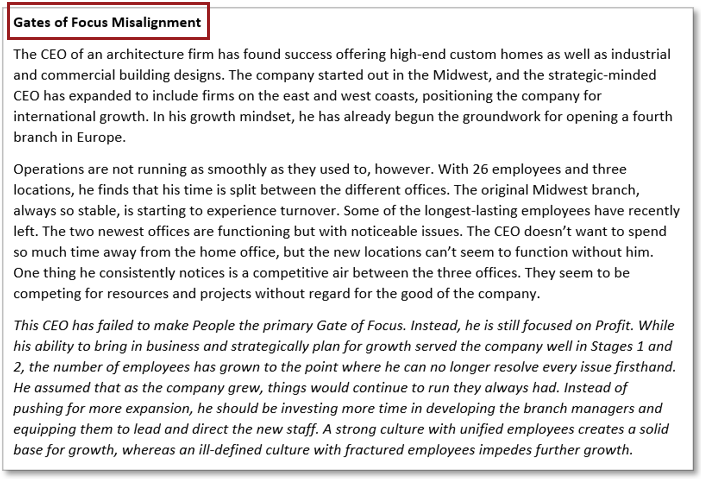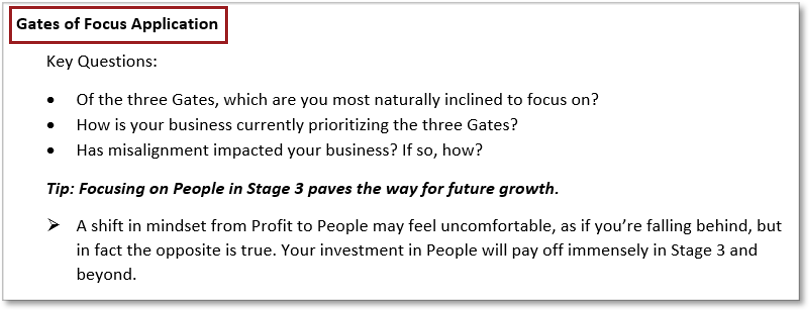
SELF-GUIDED
A Business Growth Program
You Can Implement Yourself
Targeted solutions in just 60 minutes.
You don’t have a lot of time to invest in anything “extra” for your business. We understand. You’ve poured your heart and soul into your work and it keeps you running from one day to the next. You’re doing a lot of things right, but there’s something missing that you can’t quite put your finger on. With so many decisions to be made every day and so many urgent things calling out for your attention, it’s hard to know what to focus on.
That’s why we created this series of guidebooks. Designed to be read within an hour, the Organizational ReWilding Rules for Business Growth books are practical, succinct, and worth every minute.
Each book is filled with useful tips and questions to help you apply research-based findings directly to your business. The chapters explore topics ranging from leadership style to classic business challenges and feature an overview of the topic followed by an illustrative example. Created to help guide you on your way, the books are practical rather than theoretical. You need actionable insight for your business to succeed and that’s exactly what you’ll get.
The Stages of Growth
The Stages of Growth are based on the number of employees at a company. While the dimensions of a business are the same across the stages, the way the rules apply varies. Select the guidebook that corresponds with the range of employees at your business to get the rules that will best serve your needs. Not sure what stage you’re in? Click below to access the Stage Calculator and find out!
Start Today
Tackle the overwhelm and start running your business, without it running you! The Organizational ReWilding® Rules for Business Growth series is available for purchase on Amazon. Choose the Kindle version to start reading immediately, or order a paperback copy today. Not sure which Stage to choose? Click here to find out!
Stage 1
1-10 Employees
In Stage 1, a business is in the Start-Up stage, where things are small and agile. Making sure there is enough profitable revenue is the name of the game, followed closely by finding the right people for the tight-knit group.
Stage 2
11-19 Employees
In the Ramp-Up phase, processes become more important, and more structure needs to be introduced. Just as with Stage 1, the main focus is still on having enough profitable revenue to keep the lights on. Stage 2 is the last of the owner-centric Stages.
Stage 3
20-34 Employees
As the first enterprise-centric Stage, delegation is crucial. Stage 3 represents the hardest transition for the owner due to the dramatic shift in their relationship with the business. Investing in the beginnings of an early-stage management team is critical to set up the business for future growth.
Stage 4
35-57 Employees
In Stage 4, that early-stage management team needs to be professionalized, and that’s the name of this Stage – Professional. Whether an organization trains existing managers to the next level or hires outside professionals, this is a building block that cannot be missed for successful growth into further Stages.
Stage 5
58-95 Employees
Stage 5 is all about Integration. The focused work the professionalized managers did in their respective departments in Stage 4 can often create silos. Stage 5 is where you bring those units together into an integrated management team, which begins to handle the heavy lifting of running the business.
Stage 6
96-160 Employees
Stage 6 is Strategic. A business can often grow successfully up to Stage 5 with a strong team and effective operational processes, but Stage 6 requires a different level of strategic planning and thinking. The leadership team starts handling more of the operational side of the business.
Stage 7
161-350 Employees
Stage 7 is the Visionary stage. A visionary leader is needed throughout all the Stages of Growth, but Stage 7 is characterized by the need to recapture the innovation the company had in earlier stages to avoid becoming stagnant, stuck, or irrelevant in the marketplace.
How the Books are Organized
Here’s a glimpse into how the chapters are structured and how the content differs from one stage to another.
Dimensions
The chapters in the guidebook focus on different dimensions of a business. These include topics like Leadership Style Blend, Modality, and Gates of Focus—all fundamental pieces of the Organizational ReWilding framework.
The chapter begins with an overview of the dimension, which is consistent across all Stages of Growth. Graphics are included to help illustrate important concepts.
The overview is followed by an explanation of how that dimension applies specifically to the relevant Stage of Growth.
Misalignment
The dimensions represent an ideal. After the dimension is explained, a short story illustrates what happens when there is misalignment between a business and the dimension. The stories are useful to show how the concepts apply to commonplace scenarios and include a brief analysis of what the business could do to realign with the ideal.
Application
Finally, each chapter concludes with an Application section with questions and tips to help you apply your new knowledge to your business.
Calculate the Stage of Your Business
If your business employees part-time workers or contractors, it may not be obvious how many total employees you have. The Stage Calculator is an easy way to find out what the number of employees is that you should be using to determine the Stage of your business. It only takes a few seconds to complete and the results are instant!
Stages of Growth Online Series
If you prefer to learn by watching videos rather than reading, the Stages of Growth Online Series is for you! Click below to learn more.

